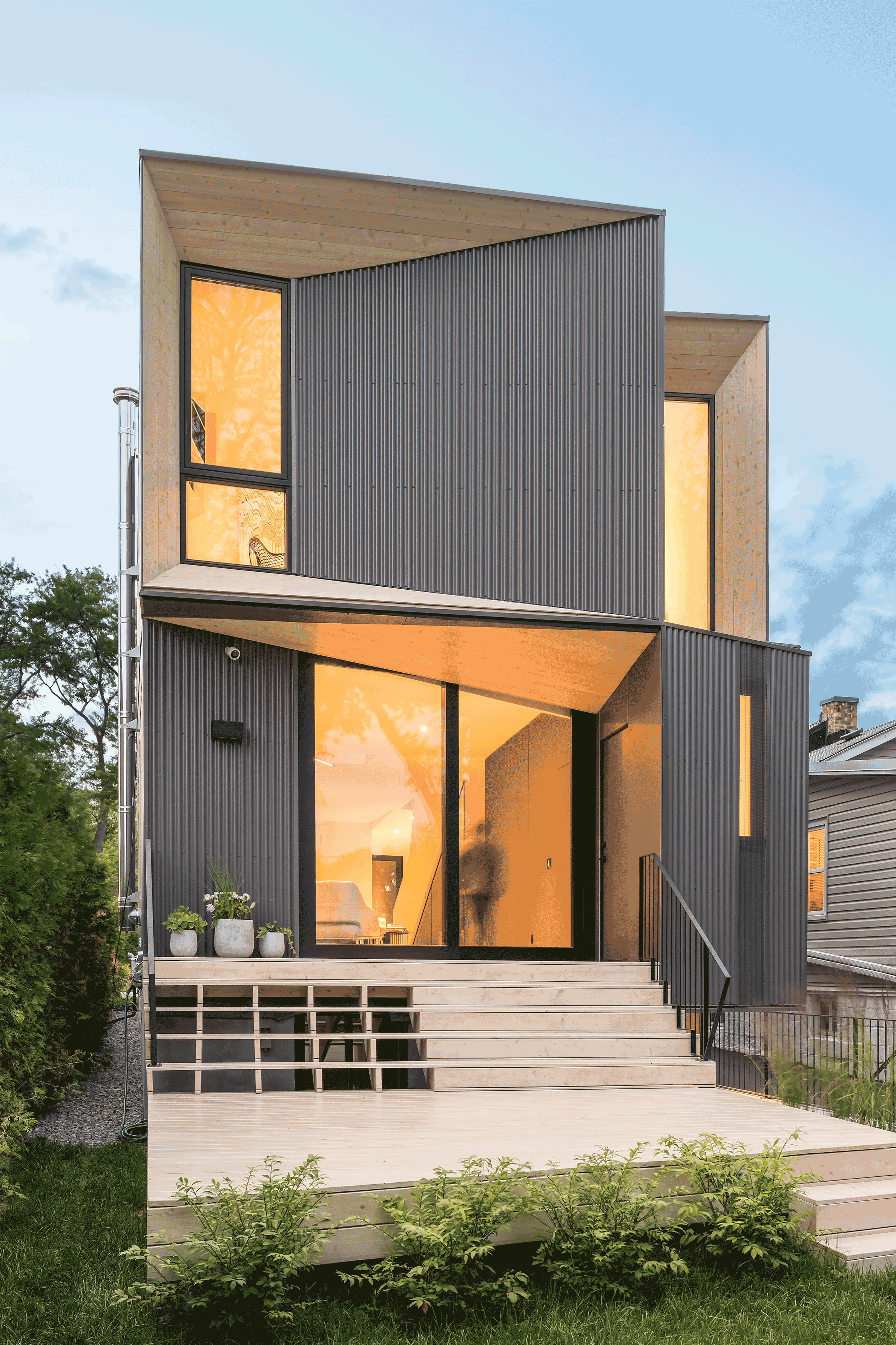x
PROJECT TYPE:
Residential, Single-Family
LOCATION:
Etobicoke, Ontario
SIZE:
275 s.m. (3,000 s.f.)
CATEGORY:
Architecture, Interior Architecture, Landscape, Design-Build
COLLABORATORS:
Atkins + Van Groll Consulting Engineers (Structural)
Located in Toronto’s western lakeside streetcar suburb, this single-family residence proves contextual while owing little to convention and serving as the antithesis to recent vernaculars. By simply and unconventionally engaging the immediate context this contemporary alternative has an impactful, yet unimposing outward presence. The ground floor’s elongated footprint rests on a plinth, a nod to quintessential area home; horizontality further emphasized by continuously delineating between floors. From this, varying degrees of articulation are born through a series of light penetrating carves in the elongated mass and a nuanced game of push-and-pull. This creates a broken-down massing informed by the surroundings while allowing for an intuitive understanding of exterior and interior spaces to begin to form. The heavy less articulate steel-clad massing of the long elevations strategically carries to the front and back, in contrast to the cedar-clad apertures they interlock with to varying degrees; balancing privacy and connectivity. This interplay of form and material soften the bold steel-clad volumes and the playful statements of the apertures, anchoring them back into the simpler form with a range of texture and warmth visible in the existing fabric. Appearing modest to the passersby, restraint loosens towards the rear façade where the homes apertures offer insight into intimate, yet expansive interior; at moments pulling your eyes through the home. While the elongated form allows for a consolidation of enclosed private spaces to the second floor, the primary vertical and horizontal circulation is stacked to one side to ideally serve both levels. This efficiency affords generous and open common spaces.
Entering under the weight of the opaque front volume, compression dissipates as stairs carry up over the counter volume that defines rear access in a similar way. From this central node straight ahead, a series of apertures define internal and external space, repeating the sequence of expansion and contraction through to the rear yard. From this same point, a carve bisects the second floor providing the daylight that makes the linear organization possible. It further dissolves the sense of exterior and interior space while connecting the second-floor common space to the ground floor at the heart of the home. With the kitchen at its center, the ground floor is a gradient of private to public, the kitchen and living room retreating behind a formal dining room addressing the street. At this threshold, the dining room aperture like the others sharply folds out and in. Softened by the wash of natural light, standing within the surround of the interior and exterior articulation creates a moment of intimacy. In one direction expanding to the outside, then contracting, and then expanding to a single space, a series of spaces, repeating the sequence once more. This geometry and the depth of experience from which the house derives its name is not provocatively innovative but nuanced, both simple and complex, revealing itself over time. All of this within the constraints of conventional local residential construction, the Tesseract House unapologetically desires to be more than just a place to live.

























